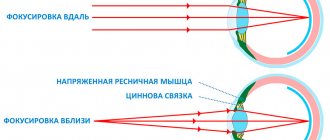The insidiousness of HIV: What happens when the virus attacks the brain
Carl Diefenbach, director of HIV/AIDS research at the National Institute of Allergy and Infectious Diseases, says that to find a cure for HIV, scientists will need to look at these reservoirs, such as the brain and other organs where HIV lies dormant. . He also adds that anti-HIV drugs must be designed to be able to penetrate the nervous system (through the blood-brain barrier) to prevent the virus from taking root there. “This study continues a number of important scientific discoveries,” says Diefenbach. “Can we develop a treatment strategy that allows people to live happy, normal lives without transmitting the disease?” We need to constantly remember that there are now between 35 and 40 million HIV-positive people on Earth.”
These statistics, and the human suffering behind them, are a big reason why nonprofits are calling for HIV awareness and prevention more urgently than they were when the virus first became known thirty years ago.
Michael Kaplan, director and chief executive of UNAIDS, an international grant-making, development and capacity-building organization to combat AIDS in the United States, said that while HIV prevention efforts are greater than they have been in the past century, pressing questions still remain about inaccessibility of health care related to cost, education and the stigma associated with people needing treatment. “With nearly thirty drugs available to treat HIV, the disease is no longer the death sentence it once was: a twenty-year-old HIV-positive person (living in a high-income country) who immediately starts taking antiretroviral therapy can expect live another fifty-five years,” Kaplan explained, citing a 2014 UNAIDS report. He also emphasized the importance of an international study conducted in 2011, from which it became known that early initiation of antiretroviral therapy reduces the risk of sexual transmission of the virus in heterosexual couples by 96%.
It's easy to throw around these glowing numbers and say that the end of HIV/AIDS is in sight. But studies like the one at Yale show how much we don't know about the disease. Mitchell Warren, executive director of AVAC, an organization that advocates for the rights of people living with HIV, states the need for science and advocacy to work together to overcome the HIV/AIDS epidemic: “There is great hope for a cure. But first of all, people must have access to them. Science and human rights advocacy are ineffective without each other.”
HIV infection - symptoms and treatment
HIV infection is a chronic infectious disease that is provoked by the human immunodeficiency virus, which infects cells of the immune system (CD4). If left untreated, it naturally leads to acquired immunodeficiency syndrome (AIDS).[6]
The human immunodeficiency virus belongs to the family of retroviruses (Retroviridae), genus Lentivirus. Information about the disease first appeared in 1970. The virus itself was isolated in 1983 simultaneously in France by virologist Françoise Barre-Sinoussi and in the USA by scientist Robert Galo, but it received a name approved by the World Health Organization only five years later - in 1987. At the same time, the first case of HIV infection was registered in the USSR.[1][2]
Currently, there are two types of virus - HIV-1 and HIV-2, which differ in their structural characteristics. In Russia, the USA, Europe and Central Africa, the first type of virus (HIV-1) is widespread; in India and West Africa, the second type of virus (HIV-2) is of epidemiological importance.
Under natural conditions, HIV remains active in a dried state for several hours, in biological fluids for several days, and in frozen blood serum for several years. When heated to 70-80°C, the virus dies in 10 minutes; when treated with a 70% ethyl alcohol solution, it is inactivated in one minute. Also sensitive to 0.5% sodium hypochlorite, 6% hydrogen peroxide, 5% Lysol, ether or acetone.[2]
The shape of the virus is round, in the center there is a core containing two strands of ribonucleic acid (RNA) and the enzymes necessary for reproduction - reverse transcriptase (revertase), integrase, protease, RNase. The core is surrounded by an inner protein and outer lipid shell. The inner envelope of HIV-1 consists of the proteins p17, p24 and p55. The outer shell is “pierced” by the glycoprotein gp160, which consists of fragments gp41 and gp120 (the so-called envelope proteins). Gp41 and gp120 on the surface of the virion form processes with which HIV attaches to the receptors of human target cells (cells of the body that have a receptor - the CD4 protein).[1][3]
Ways of transmission of infection:
- Natural:
- sexual (hetero- and homosexual contacts);
- vertical (from an infected mother to a child during pregnancy, childbirth or breastfeeding).
- Artificial - parenteral (in the case of various effects associated with damage to the mucous membranes and skin, for example, the use of non-sterile instruments during the use of narcotic substances, medical and non-medical manipulations).
It is important to note that kissing, communicating, hugging, shaking hands, sharing utensils and other household items does not transmit HIV infection.
Currently, 1,272,403 people are registered on the territory of the Russian Federation (as of June 30, 2018). At the end of the first half of 2021, there were 978,443 people living in the country who were diagnosed with HIV infection, not including 293,960 deaths. There are preliminary data on new cases of HIV infection for the first half of 2021 (51,744 people). The highest level of incidence is observed in the age group of 30-44 years.
HIV infection is actively spreading among the population. Thus, in the first half of 2021, 54.4% of people became infected through heterosexual contact, 42.8% through drug use, and 2.1% through homosexual contact.[7]
How HIV gets inside a person
The human immunodeficiency virus circulates in all tissues, secretions and secretions of the host. Therefore, infection is possible through blood transfusion of a patient, tissue transplantation, from a pregnant woman to the fetus through a single blood supply system, or through close contact of blood, saliva, sperm of an infected person with damaged skin or mucous membrane of a healthy person. Risk groups include anyone who comes into contact with the secretions and blood of an HIV-infected person.
The virus invades alone or in a cell of a sick person captured by it. As expected, the invading enemy is captured by the immune defender - the monocyte and drags it into the tissue, where the monocyte is reformatted into a macrophage in order to be digested into its constituent atoms at rest. And that’s all the virus needs, it devours the cell from the inside, divides and is thrown out with newborn comrades from the dead nurse in order to infiltrate a new and fresh one. It wanders like this until it multiplies to a certain level in order to show itself in the form of a disease.
Initial stages of HIV
The period from the introduction of the first virus to the appearance of the first symptoms of infection is called the latent period or incubation stage. The average duration of the period is about two to four weeks, but can be longer. As a rule, in nine out of ten infected people the virus manifests itself after 3 weeks, but in only one infected person the interval before symptoms appear can be more than three or even six months. During this period, there is no indication of the presence of an enemy agent in the blood - antibodies to HIV are not detected, therefore the time is called seronegative, that is, literally “absence of signs in the blood.”
The clinical manifestations of the primary infection are very insignificant, something similar to a mild flu or as if an atypical infectious mononucleosis had arrived: fever, an incomprehensible rash, enlarged lymph nodes. All this lasts about a week, and is called “early HIV infection.” Who pays attention to illness if a normal adult suffers from a respiratory viral infection six times a year, for at least five days. This is some kind of infection, like a virus, but it’s not like ARVI, but it goes away quickly and why bother if you’ve already recovered.
The appearance of short-term clinical signs of the disease indicates that the process has begun. At this time, the virus multiplies, and there are already traces of its presence in the blood, which is called seropositivity; the immune system is still reacting to it. Clinical signs go away, but the life of the virus continues, and until six months to a year the immune system reacts to it with increased activity - this is a variant of acute HIV infection without clinical signs. If you donate blood, there will be no doubt about the presence of infection.
Longest stage of HIV
The next subclinical or latent stage lasts for years. If a person has taken a blood test for HIV and is taken under observation, the level of the virus in the blood is regularly determined. There is sometimes more virus in the blood, sometimes it becomes less under the influence of treatment. There are no or almost no symptoms, for example, somewhere a lymph node has become enlarged, sometimes there is a headache, some kind of vague malaise, but by and large - everything is fine. During this period, damage to the immune defense slowly progresses. During this period, it is necessary to control the replication of the virus, because treatment started at the wrong time reduces life expectancy.
The patient is observed on schedule at the AIDS center, where PCR is performed - a polymerase chain reaction that clearly senses and even allows one to count the number of copies of the RNA of the virus floating in the host’s blood. Treatment is prescribed when a certain viral load barrier is overcome. The number of the army of immune cells is regularly calculated: CD4 T-lymphocytes, also called T-helpers, T-suppressors or CD8 T-lymphocytes, and their ratio is calculated. You must have at least 1400 T-helpers; if their number drops below 500 cells, then you need to sound the alarm - against the background of immunosuppression, AIDS is approaching, not immediately, of course, but in five patients out of a hundred in the next two years it can happen.
The effect of treatment is monitored by PCR and the increase in the level of T-lymphocytes, if the number of virus RNA has decreased threefold - good, the best result is RNA in the blood is not detected. If after a month of treatment the T-helper cells have grown, the treatment is not useless. The effect is usually initiated after 12 weeks of therapy. Sometimes the virus is not detected at all in the blood, but this does not mean that the patient has been cured. This can continue for almost three decades, but gradually the immunodeficiency worsens and the number of CD4 lymphocytes decreases.
Secondary diseases - the road to AIDS
The patient enters the next stage with clinical manifestations with fever, night sweats, enlarged lymph nodes and even diarrhea, he is tormented by headaches and progressive weakness. The virus multiplies, destroying CD4 lymphocytes, which are not replaced by new defenders - over the years of illness, the bone marrow has been depleted, it does not give birth to new cells. With a decrease in the population of immune cells, the likelihood of opportunistic infections increases: Pneumocystis pneumonia, cytomegalovirus infection, candidiasis and toxoplasmosis, tuberculosis.
Opportunistic infections are caused by microorganisms familiar to a healthy person, but against the background of a significant decline in immunity, these “good friends” become the worst enemies of a defenseless organism. Treatment with antivirals and highly active antibiotics helps if the level of T-lymphocytes can be raised. Americans consider a decrease in T-lymphocytes below 200 cells to be AIDS in the presence of at least one opportunistic infection or Kaposi's sarcoma. The level of CD4 lymphocytes can be either 100 or below 50 cells; if treatment improves the immune status and cures the infection, then the progression of the disease stops and life goes on.
The inability to increase the number of lymphocytes indicates immune dysfunction and the progression of AIDS; life continues for several more months, but it is a very difficult life.
How is HIV diagnosed in Moscow?
There are two tests to diagnose the virus: preliminary ELISA and the most accurate immunoblot. The accuracy of ELISA is about 90%. It is recommended to carry out it 3-6 months after contact with the virus, then it gives maximum accuracy. The usual ELISA test is based on a blood test, but there are also rapid tests that help obtain information based on urine or saliva. Such texts are purchased exclusively at the pharmacy (in no case on the Internet!), since it is necessary to use officially approved products.
If the rapid test gives a positive result, you need to go to an infectious disease specialist yourself. In such a situation, as well as when ELISA in a blood test gives a positive result, the patient is prescribed an immunoblot. Its reliability is already 99.9%. Depending on the diagnosis, the diagnosis is made either on the basis of two repeated tests or a combination of both. The analysis is rechecked and only after this a diagnosis can be made. This is necessary in order to exclude false positive results that may occur during the diagnostic process.
Important: the test does not show how HIV is transmitted in a particular situation - that is, you can determine the route of infection only by analyzing your own actions.
Medical Internet conferences
NEUROLOGICAL MANIFESTATIONS OF HIV INFECTION
Scientific supervisor: Sholomova E.I. Ryzhenko A.A., Farzalieva N.A., Sholomova E.I.
Relevance: Currently, HIV infection is a global problem of modern humanity. This disease occurs with damage to various organs and systems of the body. According to the literature, up to 70% of HIV-infected patients have various neurological symptoms that develop at all stages of the disease.
Purpose of the work: To identify the structure of morbidity in HIV-infected patients undergoing treatment in the neurological department.
Materials and methods: Medical records of inpatients admitted to the neurological department of the State Healthcare Institution “SGKB No. 9” during the year (from November 2021 to November 2021) were studied. From these cards, medical histories of HIV-infected patients were extracted. The following data of the subjects were analyzed: gender, age, duration of the disease, structure of the diagnosis upon admission and upon discharge.
Statistical analysis was carried out using the OfficeExell program.
Results: The proportion of HIV-infected patients from the total number of patients admitted to the neurology department was 1.08%. The age of HIV-infected patients ranged from 33 to 90 years (median - 41±9.5 years). There were 20 men, 6 women. The duration of the disease could not be determined in all those admitted. The duration of infection varied from 1 year to 17 years.
The majority of patients (69%) were admitted with a preliminary diagnosis of stroke. Dorsopathies and epilepsy accounted for slightly less (11.5% each). Rare diagnoses at admission were autonomic dysfunction and mononeuropathies.
When diagnostic measures were carried out in the hospital, the morbidity structure in HIV-infected patients changed somewhat. Persons with final diagnoses predominated: encephalopathy (42.3%) and cerebral infarction (30.8%). Among these patients, there were mainly men over 42 years of age. The average age of the subjects with a final diagnosis of encephalopathy was 42±5.9 years (of which 72.7% were men, 27.3% were women). Cerebral infarction was diagnosed in individuals whose average age was 55±13 years (of which 62.5% were men, 37.5% were women). The number of dorsopathies remained at the same level and amounted to 11.5%. Isolated cases included neuropathy of the facial nerve, subarachnoid hemorrhage, and somatoform dysfunction of the autonomic nervous system (3.9% for each clinical case).
Conclusion: The proportion of HIV-infected patients admitted to the neurology department per year exceeds 1%. Among this category of people, men under 45 years of age predominate. Diagnostic measures carried out in a hospital often significantly change the structure of the diagnosis, allowing you to competently plan the patient’s treatment tactics. Among the neurological manifestations of HIV infection, the most common are encephalopathy and cerebral infarction.
What is HIV encephalopathy?
HIV is a virus that attacks and weakens the immune system, which can increase the risk and impact of potential complications. One such complication is HIV encephalopathy. This usually occurs due to the effects of a virus or opportunistic infections such as toxoplasmosis on the brain.
HIV encephalopathy usually appears when HIV reaches its final stages, so it can appear many years after infection. This condition is more common in people who are not taking effective HIV medications and those who have very low counts of CD4 cells, a type of white blood cell that fights infections. HIV encephalopathy is less common in people who receive early and ongoing treatment.
HIV encephalopathy - diagnosis
Diagnosing HIV encephalopathy is difficult because many factors can contribute to symptoms. These include:
- nutritional deficiency
- depression
- side effects of medications
- opportunistic infections
Doctors may use the following diagnostic tests to make a diagnosis:
- mental status tests
- neuropsychological testing
- basic tests of physical ability or movement
- MRI scan
- CT scan
- blood tests
- cerebrospinal fluid tests









